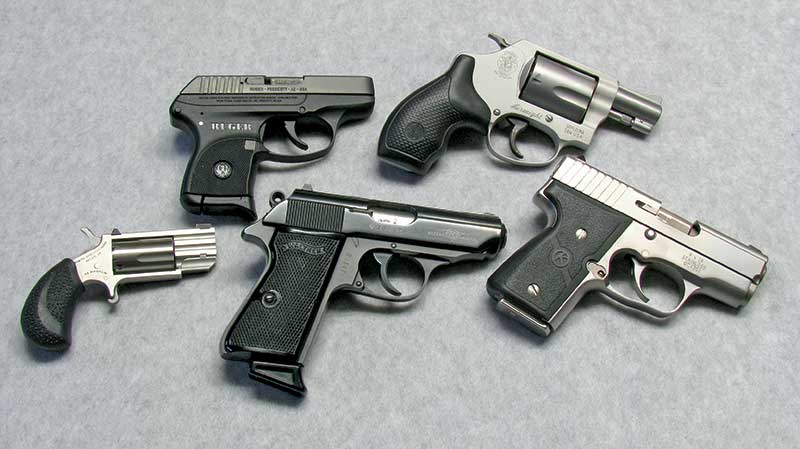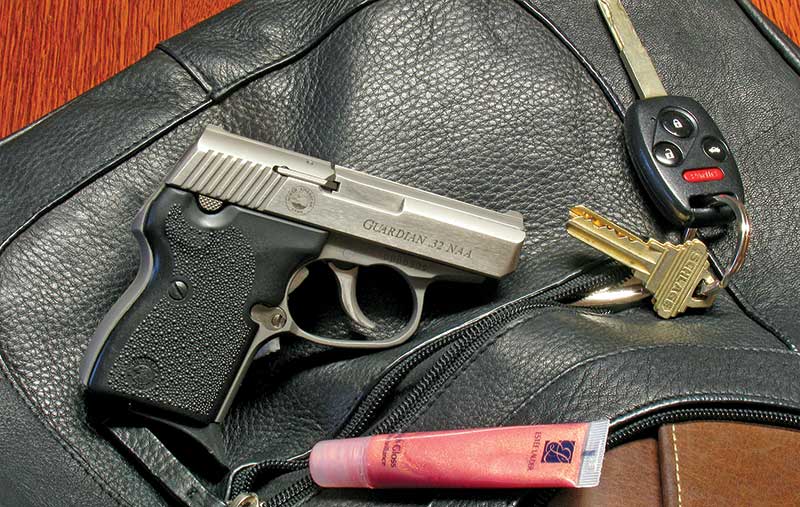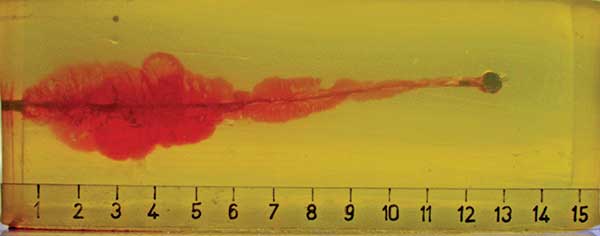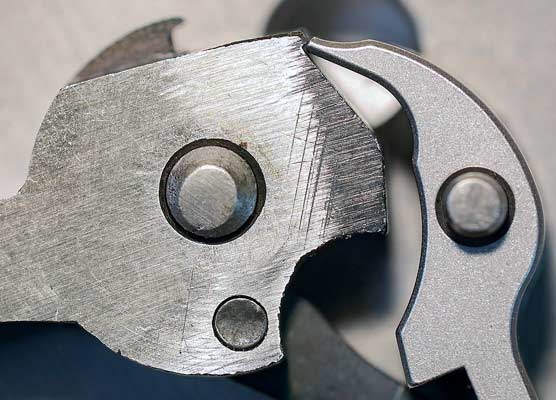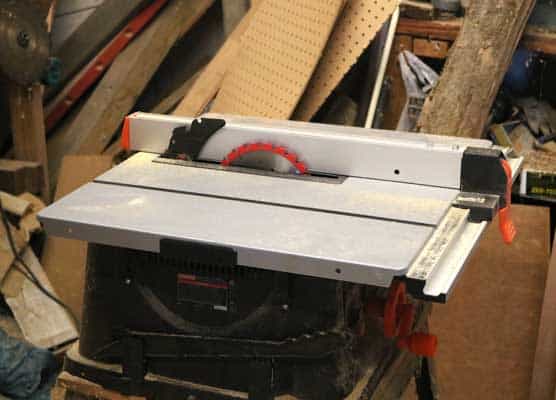The Caliber Myth
Is There A Silver Bullet Pistol Cartridge?
We’ve all heard the discussions, read the opinions in the blogs and been involved in the arguments. “The only self-defense cartridge worth carrying is the .45 Auto” or “You might as well throw a stone as try and defend yourself with a .380 Auto” — and on and on. The arguments and the opinions are endless and for the most part they are exactly that, arguments and opinions. Are you carrying a gun and cartridge combination that is effective or — is there some Achilles heel you don’t know about rendering your rig ineffective and useless?
Up to this point in my career, I’ve fired and tested nearly every caliber and brand of pistol ammunition in the free world. I have developed several pistol bullet designs and done probably in excess of 5,000 ordinance gelatin tests with these bullets. In the process of doing all this I feel I can share some things based on data, and not so much on opinion. Opinion is a good thing, but it needs to have a basis in fact. And that’s often the problem with many forum threads.
This whole discussion can really be brought down to two issues, relatively easy to get our brain around. The first involves us, the shooter and our abilities, preferences and physical statures. The second is the ammunition and it’s actual performance.
You
Let’s have a short discussion about the shooter. To lead into this part of the discussion the firearms we are talking about are compact, concealed carry handguns that are small, light and can sometimes be relatively hard to hold onto. They can also develop noticeable amounts of recoil, even with lighter bullet weight loads. Figure 1 shows a small sampling of the wide variety and size of handguns available for concealed carry today. And, yes, it’s only serving as a point of reference, and in no way intends to be intentionally ignoring other designs.
Shooters come in all sizes and with widely varying preferences and abilities. From just a purely physical standpoint, some of us are rather small in stature, have small hands and are not very well suited for a large-frame gun like a 1911. We also have widely varying sensitivities to recoil. There are also many different ways in which we may want to carry our concealed carry handgun. It may range from a very small pistol or mini revolver in a handbag, to something more substantial in a shoulder holster. There is no one-size-fits-all answer.
Some of us also don’t have the shooting abilities others have. No matter what the user is carrying they have to be able to use it effectively. A person armed with a .45 Auto who can’t keep shots in a bushel basket at 10 yards, while under stress, is not going to be very effective. A person with a .38 Special or .380 Auto who can shoot in a 5″ circle at 10 yards under stress — will be highly effective.
The bottom line is you have to be proficient with your equipment, and you have to be able to properly use, manipulate and fire it to be effective. There are folks who simply cannot shoot well with a .40 S&W or a .45 Auto because they have small hands, or don’t handle the recoil well. Does that mean these people are somehow doomed to be risking their very lives by carrying a gun/cartridge combination that is hopelessly ineffective because it isn’t a .40 S&W or a .45 Auto? Hardly
Ammo
The truth be known, virtually any cartridge existing, down to even the lowly .22 Long Rifle, is capable of decisively ending a confrontation if put in the right place. The catch here is that “right place” thing, and our ability to achieve that right place under a wide range of circumstances and stress levels. In the real world, you have to anticipate the ability to put the bullet in the right place might be a bit of a dicey proposition. So this whole argument really boils down to how much margin for error do we have in the terminal performance of our chosen cartridge for a shot — not perfectly placed? Looked at another way, does our chosen cartridge possess adequate terminal performance to convince someone intending to do us harm they’d really rather not?
At this point I will offer an opinion eliminating some calibers for serious self-defense work based on data and fact. Any small caliber incapable of achieving at least 825 to 850 fps from a handgun would be a poor choice. Cartridges that, at a minimum, cannot achieve this level of performance offer little chance of bullet expansion, and would have very low levels of terminal performance. In other words, you’re only going to make a hole the size of the bullet. You’d better be a really good shot. Cartridges I feel fall in this category are the .22 Rimfires — excluding the .22 Magnum — .25 Auto, .32 Auto and most of the calibers used in the turn of the last century pocket-type pistols. They would certainly be better than throwing a rock, but they are not going to be very effective.
At this point in time, with the state of the art in ammunition and bullet design, most other common self-defense cartridges offer terminal ballistics sufficient to convince an aggressor that pursuing what they are doing is not in their best interests. Opinions stating a cartridge has to decisively end a confrontation assume the majority of us are comfortable with their concealed carry gun being a 4″ .44 Magnum — or something bigger — and able to shoot it well.
What Then?
The truth of the matter is, with some of the new self-defense ammunition, even the .22 Magnum in a 1 5⁄8″ barrel revolver, the lowly .380 Auto in a 2.75″ pistol and the little .32 NAA cartridge in a 2 1⁄2″ pistol, can make wound cavities 1 1⁄2″ to 1 3⁄4″ in diameter for 5″ to 6″, and provide up to 10″ to 11″ of total penetration. Figures 2 and 3 show ordnance gelatin photographs with some of the latest ammunition in these three calibers, tested through FBI heavy clothing. I don’t know about any of you, but I would be completely unwilling to stand in front of one of these on a bet that it wouldn’t be effective.
Consider for a moment the better .45 Auto loads on the market today produce wound cavities of about 2″ to 2 1⁄4″ diameter and provide about 12″ of total penetration. Figure 4 shows a photo of a gelatin test of a leading .45 Auto 185-grain self-defense load tested through FBI heavy clothing. There’s a difference, but certainly not enough to say the smaller calibers are ineffective. If a woman feels she needs to carry something small for protection in her purse, I would consider her well armed with any of the above three smaller-caliber loads.
Darn … No Magic
There is no silver bullet for the most effective self-defense cartridge. What works well for one person might be a terrible choice for another person. There are some choices in caliber that are not advisable. These cartridges are incapable of producing adequate performance to provide effective, reliable terminal performance, and we explained that.
With the recent advances among the industry’s manufacturers in bullet designs and propellant properties, there are a number of very good choices of loads in a wide number of calibers. Whatever your choice is in equipment, it should fit you personally, and your circumstances, and you must be able to shoot it well. Choose ammunition that has proven performance and reliability — and then practice. And remember, with modern ammunition, reliable handguns and good training, virtually any caliber (except the ones we discussed), would be adequate for most defensive uses.
So if your gun of choice is, say, a S&W Model 10 in .38 Special, and you’ve chosen a modern, self-defense load with a proven bullet design, sought training and practice — what you’ve chosen is perfectly fine. Don’t let the forum commandos cause you to worry.
Dave Emary is a scientist currently involved in ballistic testing, design and manufacture, with a wide range of experience in the field.

Get More Carry Options content!
Sign up for the newsletter here:

